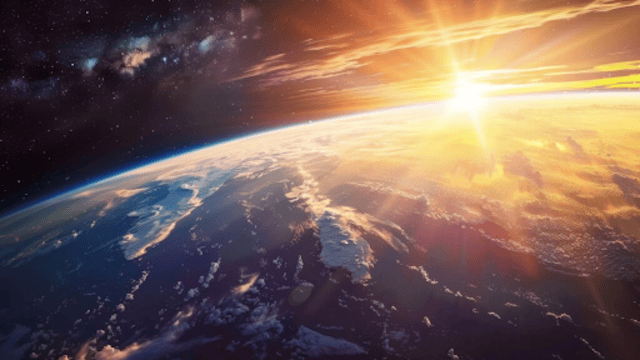
Scientists have confirmed that life on Earth will slowly disappear in the far future, not because of natural disasters or explosions, but because the planet will run out of oxygen. EL ADELANTADO
A new study by scientists from Toho University in Japan, supported by NASA’s models, suggests that Earth’s future won’t end in sudden catastrophes like fire or ice. Instead, it will happen slowly, due to the loss of breathable oxygen. While this sounds alarming, it’s not something we need to worry about anytime soon. This event is billions of years away.
How Will Oxygen Disappear?
According to the study, the Earth’s climate and atmosphere will change drastically in about a billion years. The Sun will become hotter and brighter, which will disrupt the delicate balance of gases in our atmosphere. As the Sun grows stronger, it will slowly heat up the planet, causing more water to evaporate into the atmosphere. This will affect the cloud cover, temperatures, and atmospheric conditions.
With these changes, plants will struggle to survive, and as a result, less oxygen will be produced. Oxygen levels will gradually decrease, and Earth’s atmosphere will start to resemble its ancient state, which was rich in methane and other gases but low in oxygen. Over time, this will lead to the complete loss of breathable air.
The Impact on Life
Once oxygen levels drop to a critical point, organisms that depend on oxygen to survive will start to die off. This includes most complex life forms, such as animals and plants. The only organisms that may survive are anaerobic bacteria. These microbes thrived on Earth long before oxygen was present in the atmosphere. They will continue to live in isolated environments, like underground or in hot springs, long after more complex life forms have disappeared.
Other Doomsday Scenarios
There are many ideas about how life on Earth could end, but this oxygen loss scenario is different. While climate change is a pressing issue today, it is a human-made problem that will not end life on Earth. Instead, it will just make life more difficult for humans. Similarly, events like meteorite impacts, nuclear wars, or pandemics might cause destruction, but they wouldn't wipe out all life or the oxygen needed for survival.
In contrast, the loss of oxygen is a natural, unstoppable process. It is tied to the way stars like our Sun evolve over billions of years. Unlike other doomsday predictions, this scenario is based on solid scientific understanding of how our planet and solar system will change.
What Happens After Oxygen Disappears?
When oxygen finally disappears, it will not be a sudden disaster. Life on Earth will slowly fade into a long, lifeless period. The planet will still be geologically active, but there will be no forests, animals, or insects. The Earth will become quiet, with only microbial life remaining deep underground or in isolated hot springs. The planet will no longer support complex life, but it won’t stop existing.
Eventually, in about 4 to 5 billion years, the Sun will swell into a red giant. By then, Earth will already have been lifeless for a long time, and the planet may even be engulfed by the expanding Sun.
Should We Be Concerned?
No, there is no need to worry about this event. It is billions of years in the future. This study serves as a reminder of how small human life is in the vast timeline of the universe. The challenges we face now, like climate change and preserving our planet, are much more immediate. We should focus on these issues to ensure the Earth remains livable for the future.















